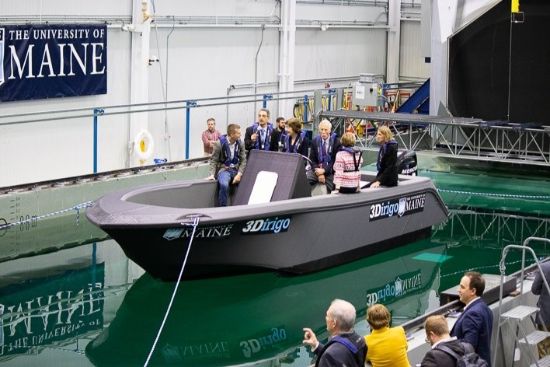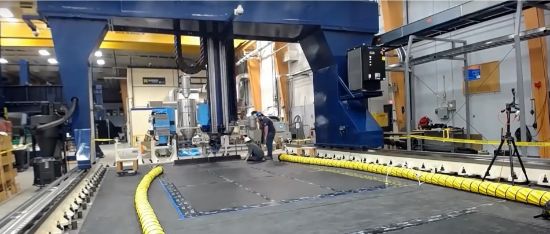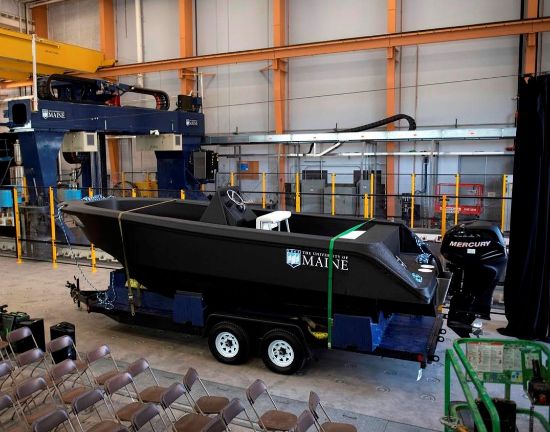3D Manufacturing Makes 25' Boat
Credit: Reprinted from Soundings Trade Only --

Maine’s congressional delegation checks out the boat.
Using the world’s largest 3D printer, the University of Maine’s Advanced Structures and Composites Center yesterday unveiled the largest boat ever produced by additive manufacturing in Orono, Maine.

The patrol boat was christened 3Dirigo after Sen. Susan Collins smashed a champagne bottle across the bow at the Composites Center. A Guinness World Records adjudicator was in attendance to verify three records, the world’s largest polymer 3D printer, the largest 3D-printed boat, and the largest solid 3D-printed item.

Habib Dagher, executive director of the Composites Center, said the previous record for the largest 3D-printed boat was a 4-foot rowboat. Earlier this year, Tahoe Boats built its first hull with 3D printing, but not a whole boat.
The printer was also used to make a tactical shelter for soldiers and a mold for a bridge girder, both of which were unveiled during the event on Thursday.

In a statement, Sen. Angus King said the leaders of the Composites Center were “persistent right to the edge of annoying” when they were pursuing the goal to develop composite technology while boosting the state’s wood products businesses.

The university announced in May that it was installing the printer, which was developed in partnership between UMaine and the U.S. Department of Energy’s Oak Ridge National Laboratory in Tennessee. Using the plastic-cellulose blend could boost the state’s wood-products industry, which has been in decline as businesses move away from using paper made in Maine’s mills.
Dagher said the Composites Center worked with local builders to develop the boat and discussed other potential uses for the technology. The printer could be used to make molds for boats and parts, which should decrease construction time. It has already been used to make a top for a boat.

About 160 students per year work in the Composites Center. Dagher said approximately 30 worked on 3Dirigo. “It’s beyond what you would ever see in the classroom,” he said, adding that the printer is drawing interest from students outside Maine.
Steve Von Vogt, executive director of the Maine Composites Alliance, said in the statement that having the world’s biggest 3D printer in the state is “a huge win.”